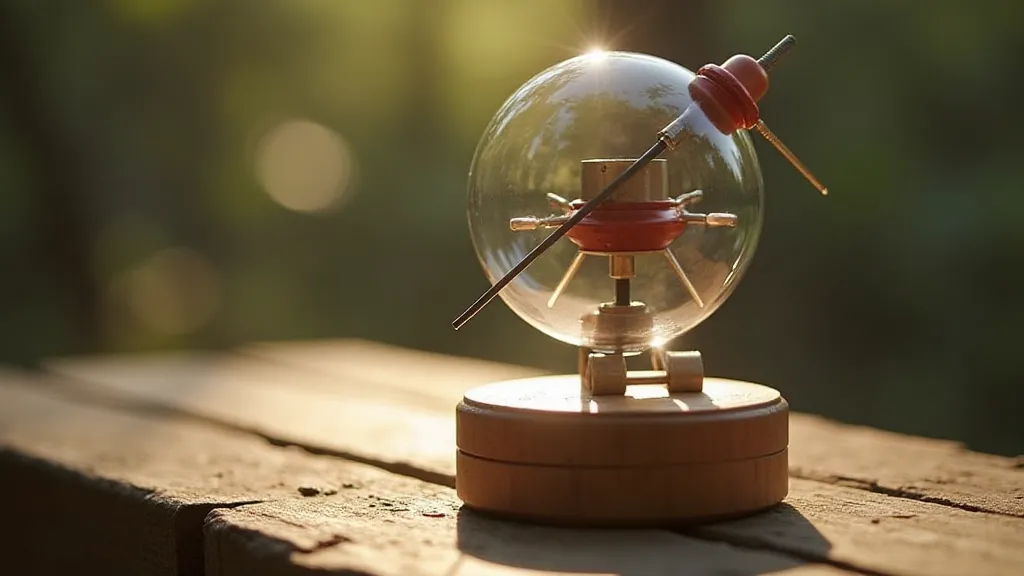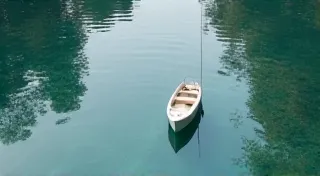The Lunar Compass: Navigation By Magnetic Anomaly
There’s a certain melancholy beauty in antique accordions. Holding one, feeling the weight of seasoned wood and aged bellows, you’re not just holding an instrument; you’re holding a whisper of lives lived, music played, and stories told. They are objects laden with history, each dent and scratch a silent testament to their journey. My grandfather, a quiet man of few words, had one. A Hohner Marine Band, its black finish faded and worn, but still capable of producing a surprisingly rich, resonant tone. He rarely played it publicly, reserving it for moments of solitary reflection. I remember the scent of aged wood and felt, a smell that conjures a deep sense of peace and a wistful longing for a past I never knew.
That accordion, and my grandfather’s quiet reverence for it, sparked a lifelong fascination with mechanisms, with understanding how things worked, and with finding beauty in the intricate dance of small parts. It’s a fascination that ultimately led me to rare earth magnets, and to the idea of building something simple yet profound: a compass – but not just any compass, a compass designed to reveal something deeper about the Earth’s magnetic field.

We all know the basics: the Earth acts like a giant magnet. This creates a magnetic field that helps us navigate, shielding us from harmful solar radiation. Compasses, in their simplest form, align themselves with this field, pointing towards magnetic north. But the magnetic field isn't uniform. It’s a complex, dynamic system influenced by the molten core of our planet. Local anomalies—variations in strength and direction—exist everywhere. These anomalies can be subtle, often overlooked, but they hold a fascinating story about the Earth's geological processes and, potentially, offer unconventional navigation opportunities. Understanding the history of magnetism itself also provides valuable context; exploring echoes in the iron, and how early civilizations harnessed its power, reveals a deep-rooted connection between humanity and this fundamental force.
For centuries, sailors relied on the compass, a technology revolutionary for its time. Before GPS, before even accurate celestial navigation, the compass was their lifeline. Consider the ingenuity of those early compass makers – crafting a needle, magnetizing it, suspending it on a pivot, and then encasing it in a protective housing. They were practical artists, blending engineering with craft. To truly appreciate the magic of a modern rare earth magnet is to appreciate the long and fascinating history of magnetism itself.
My ‘Lunar Compass’ isn't meant to replace a traditional compass. It's more of an exploratory project—a demonstration of how sensitive rare earth magnets can be to subtle changes in the magnetic field. The core principle is to create a low-friction, highly responsive system that can detect minor shifts in magnetic direction. It uses a small neodymium magnet suspended within a shallow dish filled with oil. The oil minimizes friction, allowing the magnet to rotate freely. A simple frame and marked scale act as the display.
The crucial part is the neodymium magnet. Unlike traditional compass needles, which are often made from weaker materials, neodymium magnets offer significantly higher magnetic strength. This increased sensitivity means that the Lunar Compass can pick up on very slight magnetic disturbances that a standard compass might miss.

The real interest lies in what we can learn from these subtle variations. By comparing the readings of the Lunar Compass with a standard compass in different locations, we can map local magnetic anomalies. This isn't just an academic exercise. Understanding these anomalies could potentially be useful in unconventional navigation techniques—for example, identifying subtle magnetic corridors that provide a more consistent direction, or for developing more robust navigation systems that are less susceptible to magnetic interference. The process of mapping and interpreting these anomalies has a long tradition, and for those interested in a broader exploration, examining the cartographer's compass provides a deeper dive into the historical methods and evolving understanding of these irregularities.
Imagine an adventurer, lost and without conventional tools, relying on a network of locally mapped magnetic anomalies to guide them. It's a romantic notion, perhaps, but one rooted in the potential of understanding the Earth’s magnetic field in a more nuanced way. The Lunar Compass, even in its simple form, is a step towards exploring that possibility.
Working with rare earth magnets requires caution. They are incredibly strong and can easily pinch fingers or snap together with considerable force. Keep magnets away from pacemakers and other sensitive electronic devices. Also, be mindful of their attraction to metallic objects – a loose magnet can quickly become a projectile!
Beyond the physical dangers, there's an environmental consideration. Neodymium magnets are produced using rare earth elements, the mining and processing of which can have environmental impacts. Responsible sourcing and proper disposal of magnets are important to minimize our footprint. A respect for craftsmanship also means respecting the planet that provides the materials. It’s intriguing to consider how our understanding of color and light can intertwine with magnetic fields, a concept explored in depth with the chromatic magnet.
The Lunar Compass project isn’t about creating a superior navigational tool. It’s about fostering curiosity, understanding the intricate workings of the natural world, and appreciating the beauty of the unexpected. It's about taking something simple – a compass – and using modern materials to explore its hidden depths. Just like my grandfather's accordion, which held a lifetime of stories within its worn frame, the Lunar Compass invites us to listen for the whispers of the Earth.

This project is just a starting point. Imagine incorporating sensors to measure magnetic field strength, GPS data, and even geological information to create a sophisticated mapping tool. Or envision designing a self-calibrating compass that automatically adjusts for local anomalies. The possibilities are endless.
The Lunar Compass isn’t just about magnets; it’s about the power of observation, experimentation, and a willingness to look beyond the obvious. It's about finding your own path, guided not just by instruments, but by a deeper understanding of the world around you—a world filled with hidden currents, subtle forces, and the endless potential for discovery.
Furthermore, the illusion of magnetic forces and how they interact with our perception of reality are fascinating areas of study. For those interested in the connection between magnetic phenomena and visual perception, exploring the siren's pull offers a compelling journey into the interplay of science and perception.
The principles behind the Lunar Compass project extend beyond the realm of navigation. The application of rare earth magnets and their sensitivity to magnetic fields can be seen in various industries, from medical imaging to data storage. While this project focuses on the practical aspects of compass design, it also serves as an introduction to the broader world of magnetic phenomena and the innovative ways we can utilize them.
One particularly exciting area of future development could involve integrating machine learning algorithms to analyze the data collected by the Lunar Compass. By training these algorithms on large datasets of magnetic readings, we could potentially identify previously unknown anomalies and even predict future changes in the Earth’s magnetic field. This would require significant investment in infrastructure and expertise, but the potential benefits are immense.
The simplicity of the Lunar Compass belies its complexity. Although it doesn’t offer a substitute for sophisticated navigation systems, it serves as a potent reminder that profound insights can often be gained through simple experimentation and a willingness to question assumptions. It’s a project that celebrates the beauty of the unexpected and the endless possibilities that arise when we combine curiosity with ingenuity.





